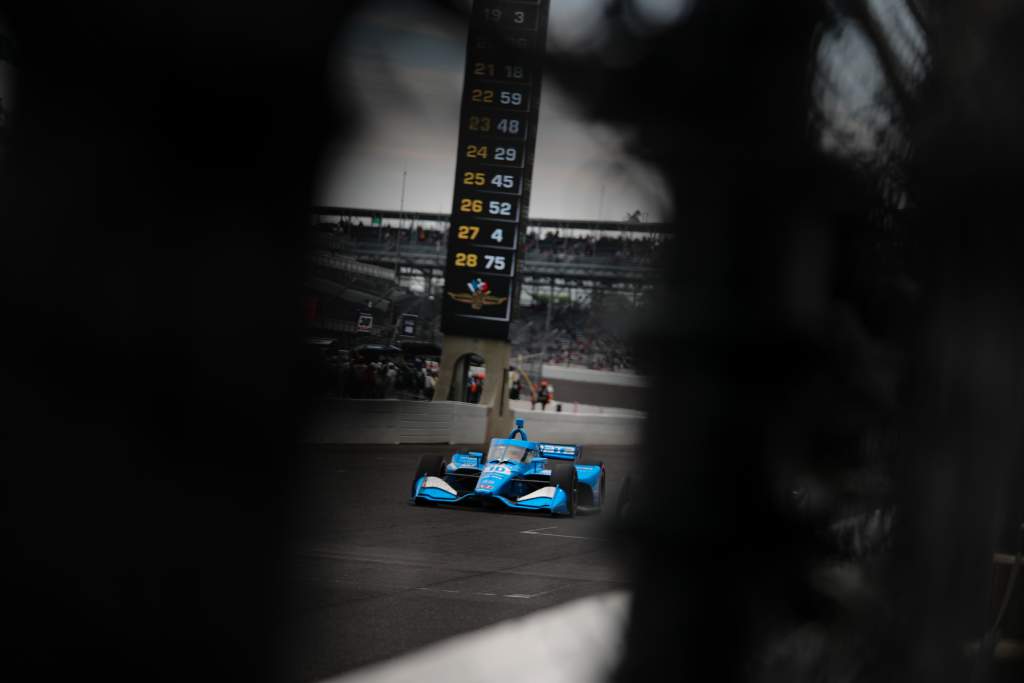IndyCar points leader Alex Palou has been hit with two engine penalties this year already, and there’s another one on the way.
He was “100% sure” the engine that hit trouble and ended his race at Indianapolis last weekend can’t be repaired, and Honda has now confirmed that to The Race. A fresh engine is required.
That means his third grid penalty of the year at Saturday night’s Gateway race, and this one is nine places.
The Chip Ganassi Racing driver was running fifth and closing down the leaders when his Honda engine suffered damage in the closing stages of the Brickyard road course race.
If the race finished with the positions of the lap before he retired, he’d have extended his championship lead to 50 points – equivalent to a race win. Instead it’s fallen to 21.
“At least we know, we’ve been through that already twice this year, so it’s not like it’s something new for us,” Palou told The Race as he pondered the likelihood of another grid penalty before Honda confirmed it.
“We’ll try and get the most out of it. Hopefully Gateway is a race that’s not going to hurt us that much just because you get so many different strategies and with the yellows and stuff it gets a bit more crazy than a normal street or road course.
“So at least that gives us more opportunities if we’re starting maximum 10th, which is not great. We’ll try and have some fun and a good weekend for the championship.”
You can trace back the root cause of this engine trouble to the pre-season, where Palou lost one of his four race engines to an issue in testing.
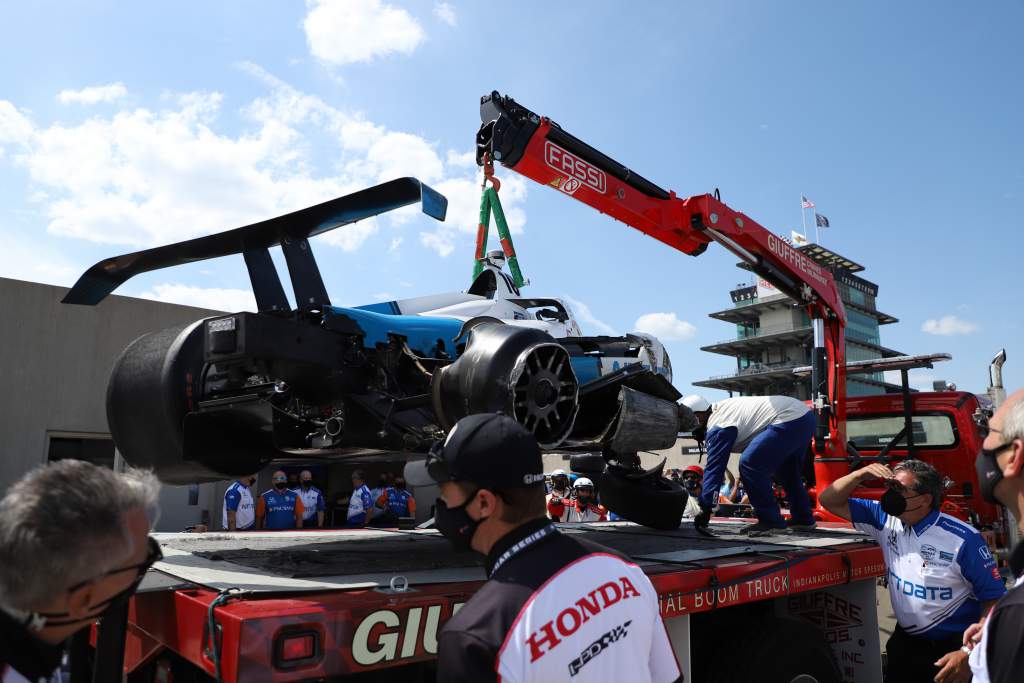
He then crashed in qualifying for the Indianapolis 500, which earned him his first six-place grid penalty for the first Detroit race the following weekend for an unapproved engine change to replace the unit damaged in that crash.
The IndyCar rule book states grid penalties are not served at the 500 and are instead carried over to the next weekend.
After the 500 qualifying crash, Palou was able to switch back to his #2 engine used earlier in the season and use that for the 500 itself because it still had mileage left to use. But because this change was made between qualifying and the race – which is not allowed – Palou was penalised.
When the #2 engine maxed out on its mileage, Honda switched to the fourth unit in the pool allowed over a season, but this sustained damage in the Portland test on July 31.
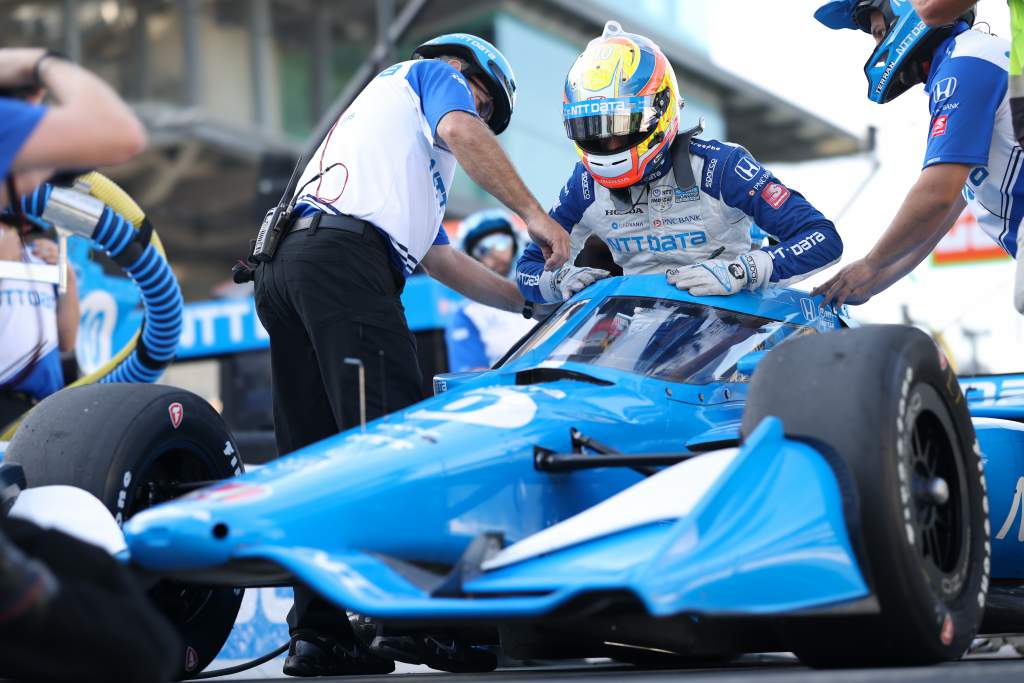
Therefore Palou had to take a fifth engine, earning him penalty two at the following race in Nashville.
Josef Newgarden – in a Chevrolet-powered Penske entry – is the only other driver to fall foul of this rule and he’s only been penalised once, while Palou is set to take his third penalty at Gateway.
I raise this to point out it’s not merely a Honda issue, and each team’s four engines are being pushed way, way into the season across races and testing. It’s a big ask and a credit to IndyCar’s power providers that more teams aren’t suffering.
However, there’s every chance with more races than last year we’ll see more people hit by running out of engines, just in a more obvious way than the extremely unlucky Palou.
Asked for is opinion on the engine rules by The Race, Palou says: “The thing is, if you blow up during the race, I think that maybe you’re already getting penalised, right?
“I mean, you’re not finishing that race. Why should we be penalised again?
“But I don’t see it as super bad, like, I kind of understand.
“But what I don’t understand is the first penalty that we got, that was because we blew up an engine during pre-season.
“So the season didn’t even start yet and blowing that engine gave us one engine less for the season. So that’s the one I didn’t understand, that’s the one I would change the rule on.
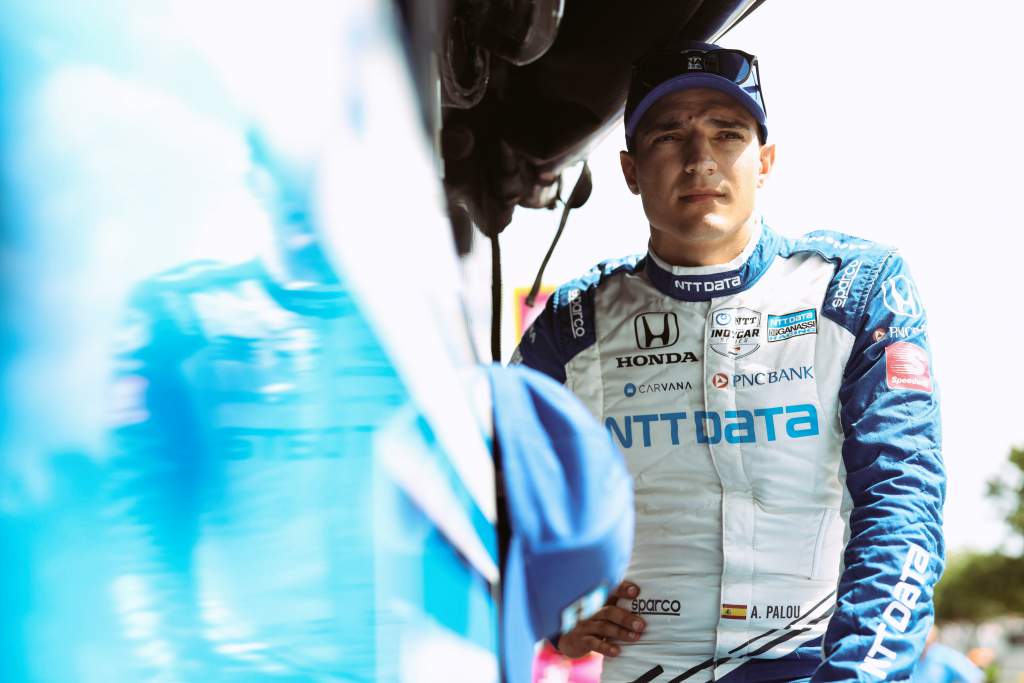
“If the season has not even started, man, you can blow up as many engines as you want!
“We’re not racing at that point so it’s not like I’m getting penalties for doing track limits or I’m not getting points for being the fastest so why do I get penalties for blowing up an engine while doing testing?
“But anyway, now I understand during the races, I think it’s fair and yeah it’s been unfortunate for the number 10 car but it is what it is. Nothing to complain too much about.”
So far the engine penalties haven’t hindered Palou too much. He did struggle to a 15th place in Detroit on the day of the first one – street courses have been his weakest point this year – but rebounded with a seventh in Nashville after some clever strategy by his team.
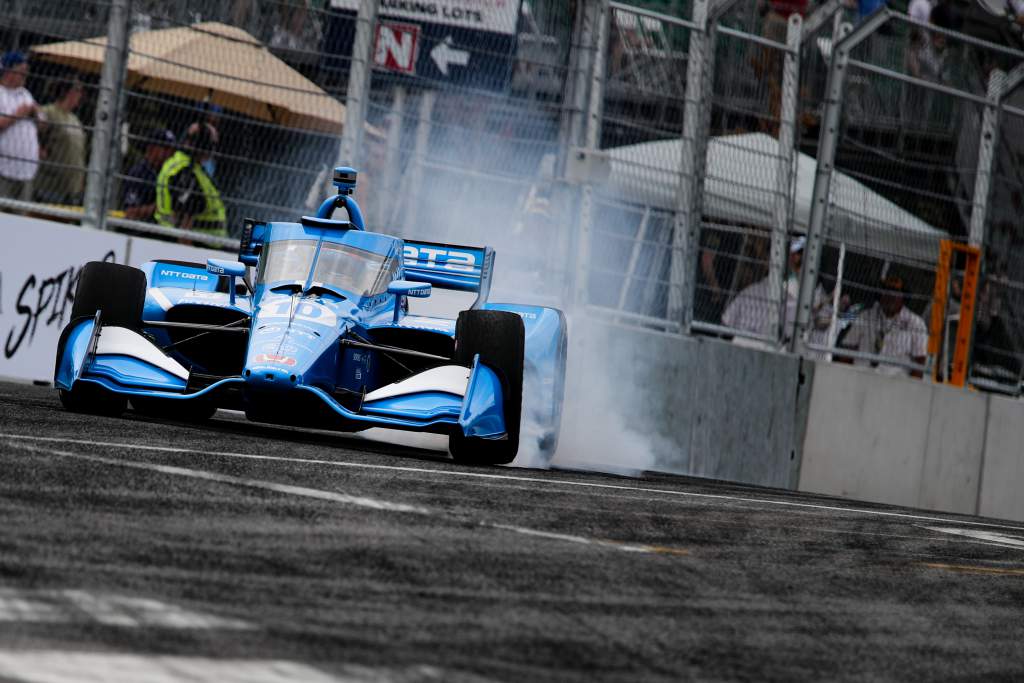
There’s no doubt this number 10 team – which Palou joined last winter – has gelled brilliantly and that’s in no small part down to the example set by Palou on and off the track that this team can cope with adversity and deliver.
Many people were surprised by Palou not getting angry following last weekend’s issues, but instead of shouting and screaming or throwing his steering wheel, he thanked Honda for helping get him to where he is, and immediately put the focus on a brighter future. The work of a leader.
“I think some people were surprised that I was not super upset when I left the car but, I mean, it’s racing,” he adds.
“You never want this to happen but you’re ready and I also started on the first lap having some issues on the engine so I knew that was something that was not 100%.
“Once you have a bad moment you cannot get super crazy. I think I’m really chilled in both good moments and bad moments.
“If it was something I did as a mistake like what I did in qualifying in the Indy 500 [crashed] I get mad, because that’s something I can control.
“But if it’s something not in our hands, we just put the work in again and then go right back. So that’s what we’re going to do.”
The good news is – with a bit of luck – Palou’s Gateway penalty should be his last as the fresh engine going in now should comfortably make it the distance over the subsequent three rounds of the season, avoiding any mechanical issue or incident.
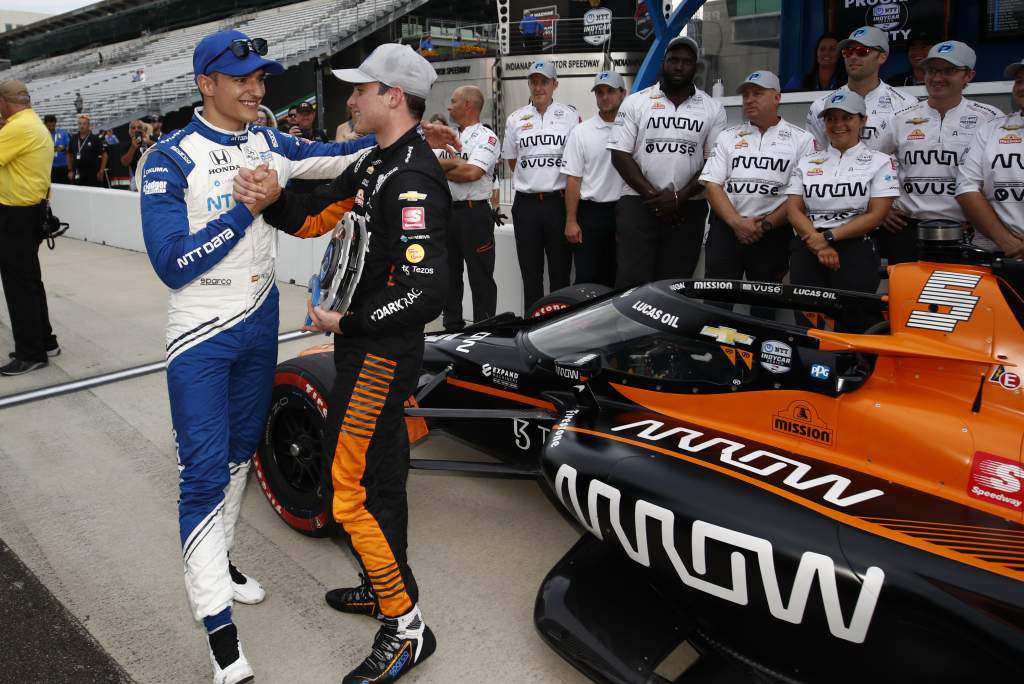
Rival Pato O’Ward now has momentum in the championship, and needs to outscore Palou by six points per race over the last four events to claim the title. Either of them would be a first time title winner, while Scott Dixon waits in the wings – well within striking distance of a seventh title.
The Gateway oval ends a string of three races in as many weeks for IndyCar, which then takes a three-week break before concluding with a Portland, Laguna Seca and Long Beach triple-header in September.
“I am comfortable going to Gateway, because last year it was actually a good race for me,” says Palou, pictured below racing at the track with Dale Coyne in 2020, when he took 15th and 12th in the double-header despite his relative lack of oval experience.
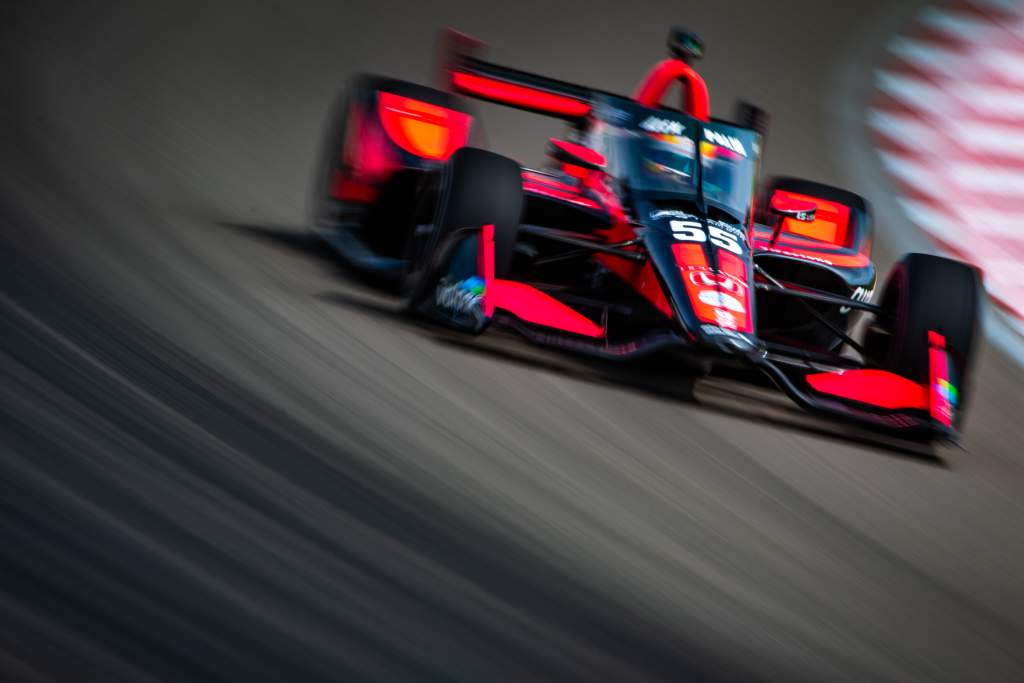
“Obviously testing early on in the season at Laguna, it was good. I think it’s a track that suits us, and we have a good car. Same for Portland.
“And then Long Beach, obviously it’s not the best track for me to end the championship just because it’s a street course that everybody that I’m fighting with has been to, and you don’t get more practice, you don’t get anything else, you cannot test, the track is not even built yet.
“It’s OK, we’ll get ready, we’ll try and put the work in to be confident enough to try and do a good job.
“But, I mean, it’s still far away Long Beach, so let’s get Gateway in, and hopefully we can build some really good gap before Long Beach so we can relax a little bit.”
So far Palou has delivered on the track and looked unshakeable. He only has three finishes outside the top seven this season and two were due to mechanical issues.
Let’s hope it’s not an engine penalty that decides this thrilling title battle, and that it is an epic fight on track between the young pretenders Palou and O’Ward and the wily legend Dixon.


